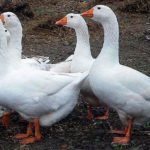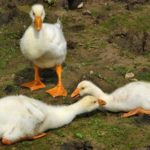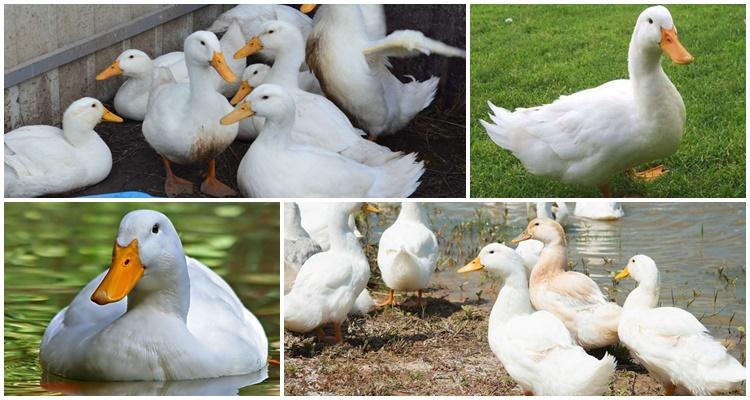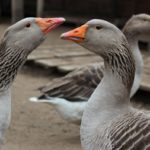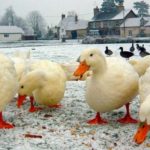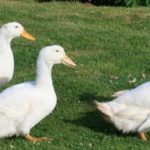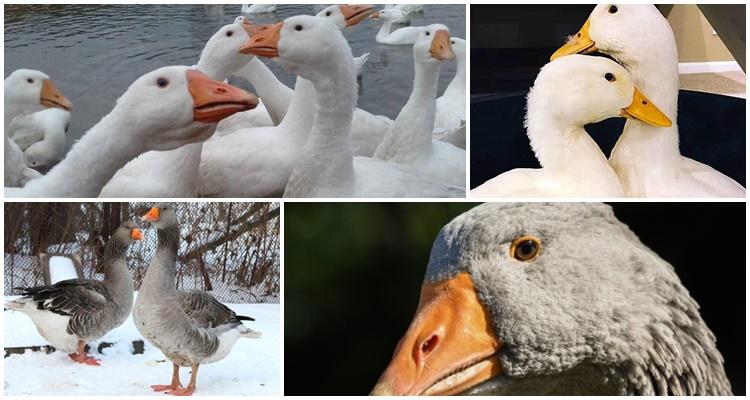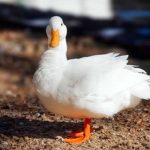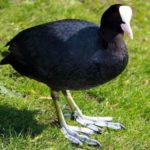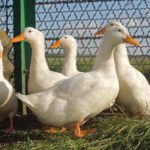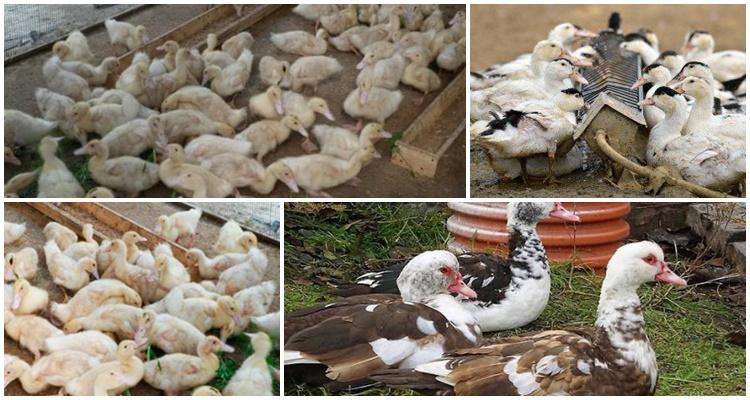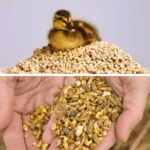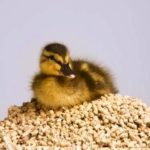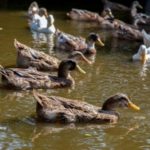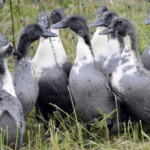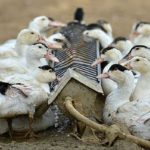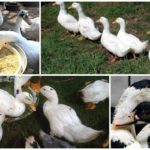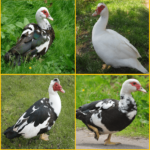It is impossible to successfully breed ducks without properly preparing a feeding diet. High-quality, high-calorie, balanced nutrition increases egg and meat productivity. When choosing what to feed ducklings, the farmer focuses on the number of livestock, desired productivity and financial capabilities. On large farms, they choose intensive fattening with compound feed; on private farmsteads, it is customary to feed ducks with natural grain and grass feed.
What do ducks eat?
The diet of ducks must be varied and balanced, this is the only way to achieve high productivity of the livestock. Birds eat:
- Cereal feed is the basis of the duck diet. Whole and crushed grains, seeding are sources of carbohydrates, vitamins, mineral elements that provide energy for the development of the body. Birds readily eat wheat, corn, barley, oatmeal, and boiled rice. You should not give ducklings whole grains; it will burden the digestive tract, causing the young to die. Ducklings up to 2 weeks of age should be fed with turd or coarsely ground flour (barley, without hulls).
- Juicy food. Herbs, algae, vegetables - birds love to feast on them in the summer.
- Animal food. Essential for ducks as a source of proteins and mineral elements that ensure skeletal strength and body growth. Small fish, fish meal and bone meal are used to feed ducks.
- Mineral supplements. Strengthen the skeleton, prevent calcium deficiency. They are especially necessary for laying hens, whose bodies spend a lot of minerals on the formation of eggshells.
The table shows a list of products that are recommended to feed ducks. By combining and replacing them, they create the optimal diet for egg-laying and meat birds.
| Product | Benefit | Acceptable portion |
| cereal feed | ||
| corn | the main easily digestible source of carbohydrates in the diet of ducks | 40-50% of the total feed volume |
| wheat | supplier of proteins (14%), tocopherol and B vitamins | a third of the daily ration |
| barley | source of carbohydrates | |
| oats | protein supplier (15%) | |
| peas | main supplier of protein used in ground form | 10% of cereal feed |
| juicy food | ||
| duckweed, elodea | main vitamin and mineral source for ducks | 15 g per day for a duckling, up to 500 g for an adult |
| grass | alfalfa, clover, nettle leaves are a must-have vitamin supplement | 15-20% of the diet |
| vegetables | cabbage leaves, pumpkin, carrots are sources of carotenoids and vitamins | 10-15% of the daily portion |
| roots | potatoes, chopped sugar beets - boiled | 15-20 % |
| silage | juicy vitamin food from legumes, herbs and vegetables | to adult birds in small quantities (ducklings under 3 weeks of age are prohibited from giving) |
| animal feed | ||
| fish flour | contains proteins (50%), B vitamins, calcium and phosphorus | 5% of total feed |
| bone flour | The benefits are comparable to fish, but contain less protein (30%) | |
| fish fillet | replacement for fishmeal | 20 g per individual |
| cottage cheese and whey | protein and calcium suppliers | in small quantities |
| mineral supplements | ||
| chalk, shell rock | main sources of calcium | 2-3% of the main feed |
| coarse sand | helps the bird grind up solid food particles in the stomach | 10-15 g per week |
| salt | mineral source, used if the ducks’ diet does not contain salted vegetables and concentrates | 0.2% of the total feed weight |
The diet of ducks changes as they grow older. Memo for beginning farmers how to feed ducklings correctly from birth to adulthood using the example of CT5 and STAR-53 broilers:
- Feeding ducklings up to 5 days - boiled yolk (10 g), wet mash and chopped grass (5 g each).
- From the 5th day, millet (3 g), wheat and corn shreds (5 g), bone-fish mixture in equal proportions (4 g), low-fat milk (2 g) are added.
- For two-week-olds - wheat-corn mud (70 g), grain mixture (15 g), millet (10 g), low-fat cottage cheese (20 g), fish meal (8 g), sunflower cake, bone and grass meal (5 g each). ), yeast (3 g), shell rock and chalk (2 g), salt (0.5 g).
- For menstruation - turd (100 g), bran and greens (60 g each), grain mixture (20 g), fish meal (10 g), bone meal (7 g), chalk and shell rock (2 g).
- For two-month-old ducklings, the diet is the same as for one-month-old ducklings, but take 70 g of corn dirt, 30 g of wheat, and 60 g of grain mixture.
Prohibited bird food
Despite the omnivorous nature of ducks, they should not be given certain foods:
- old bread, moldy food are sources of aspergillosis (fresh soaked bread is allowed in small quantities);
- finely ground flour (in the mouth, when interacting with saliva, it turns into a sticky mass and clogs the nasal passages);
- milk (causes diarrhea in ducks);
- poisonous herbs - henbane, celandine, hemlock and others;
- Maple leaves.
Before use, nettles are scalded with boiling water to neutralize the stinging fibers that can cause stomach irritation in ducks.
You should not feed birds zucchini and cucumbers in large quantities - these vegetables increase the leaching of calcium from the body. You cannot feed ducks with potato and fruit peelings, watermelon and pumpkin rinds - the bird's digestive tract simply cannot cope with the digestion of rough food.
How many times a day should I feed?
Newborn ducklings should be fed for the first time after 24 hours of pecking. Before this, only water with a weak manganese solution. During the first week of life, ducklings feed every 2-3 hours, that is, 6-7 times a day.After 3-4 days from birth, the chicks can be released with their mother to feed at a pond, then the owner can only feed them 3-4 times a day.
Composition of feed for ducks
Ready-made feed for rapid growth of ducks is sold in a livestock store, but it is better to prepare it yourself, saving money. Preparation is simple, and the farmer will be confident in the quality of the feed. To make feed, take a grain mixture and greens. A simple and universal product version includes the following components:
- corn flour;
- wheat bran;
- clover;
- alfalfa;
- nettle leaves;
- willow leaves.
Compound feed is a perishable product, so the quantity is prepared that the birds eat per day. Take a 10-liter bucket. The green ingredients are crushed, poured with boiling water, and left for half an hour. Then bran and wheat flour are added to form a mass of dense consistency. It is thoroughly stirred until smooth.
Subtleties of feeding depending on the season
In winter, it is more difficult to feed ducks, because there is no natural vitamin food - grass, vegetables. The winter diet is based on cereals, grain mixtures, and wet mash. Bone and fish meal, hay, carrots, and boiled potatoes are used as a useful supplement.
The basis of the summer diet is greens. It is good if free range is used, and there is a natural reservoir near the poultry house in which the birds obtain a significant part of the food (algae, underwater vegetation, insects, mollusks). In this case, the owner only has to feed the ducks 2 times a day.If the birds are kept in a pen, then they should be fed wet mash twice a day, and dry grain food twice a day.
Fattening adult ducks for meat before slaughter
Ducks are fattened for meat for 2-3 months. 15 days before slaughter, the diet includes foods with a high protein content: boiled potatoes, legumes, cottage cheese. Fish products are excluded so as not to spoil the taste of duck meat.
Meat animals are placed in a difficult cage that limits movement so that the bird's body burns fewer calories.
The basis of the diet is hearty mash made from boiled potatoes, corn, wheat, and barley grains soaked in boiling water, seasoned with meat broth or fermented milk whey. It is recommended to feed mash 3 times a day. It is important that broilers eat every last crumb. The approximate daily ration of fattened ducks (g per individual) is given in the table:
| Product | Age, days | ||||
| to 10 | 11-20 | 21-30 | 31-50 | 51-60 | |
| boiled yolk | 3 | ||||
| low-fat cottage cheese | 3 | 7 | 10 | ||
| low-fat milk | 5 | 10 | 20 | ||
| boiled meat scraps | 5 | 10 | 15 | 20 | 25 |
| chopped greens | 20 | 30 | 60 | 70 | 80 |
| boiled potatoes | 20 | 40 | 60 | 80 | |
| crushed grain | 2 | 30 | 60 | 80 | 100 |
| bran | 5 | 15 | 25 | 35 | 40 |
| grain waste | 15 | 25 | 30 | 40 | |
| meal, cake | 2 | 5 | 8 | 15 | 20 |
| bone flour | 0,5 | 1 | 1,5 | 2 | 3 |
| yeast | 0,2 | 0,5 | 1 | 1 | 1,5 |
| chalk, shell rock | 1 | 2 | 3 | 5 | 6 |
| salt | 0,2 | 0,5 | 1 | 1 | |
| sand | 1 | 1 | 2 | 2 | |
Feeding during laying period
The diet for a laying hen is selected taking into account her egg production; daily portions of products are shown in the table:
| Product | Monthly egg production, pieces | ||||
| until 3 | to 10 | up to 15 | before 18 | until 22 | |
| grain mixture | 45 | 60 | 75 | 80 | 85 |
| corn flour | 100 | ||||
| grass meal | 40 | ||||
| boiled potatoes | 60 | 50 | 40 | ||
| grass and roots | 90 | 100 | 110 | ||
| meal, cake | 2,5 | 9,5 | 12 | 13,5 | 15 |
| meat trimmings | 1,5 | 6,5 | 7,5 | 9,5 | 10,5 |
| bone flour | 1 | 1,5 | 1,5 | 1,5 | 2 |
| chalk, shell rock | 6 | 8,5 | 9 | 10 | 11 |
| salt | 1 | 1,5 | 1,5 | 1,5 | 1,5 |
Birds that lay eggs are given increased portions of foods rich in calcium and other minerals. Feed the ducks 4 times a day. It is recommended to add a yeast solution to the feed (20 g per 1 liter of water).A laying hen should drink about 1 liter of water per day, but it is not advisable to give wet food during the incubation period.


